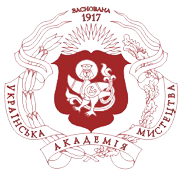RESTORATION AS A MEANS OF ADAPTATION THE MONUMENTAL HERITAGE OF THE SOVIET TIMES ON THE EXAMPLE OF TWO PANELS BY V.Y. SERVIN (IVANO-FRANKIVSK)
DOI:
https://doi.org/10.32782/naoma-bulletin-2024-1-12Keywords:
restoration, conservation, selective removal of repainting, Ukrainian monumental art, mosaic, decommunisation, adjustment of the original intentionAbstract
The purpose of this article is to analyse the methods of conservation and restoration and ethical issues of rethinking and adapting the heritage of the Soviet period on the example of two paired mosaic panels of the 1960s by the Ukrainian artist V.Y. Servin (1931–1994) [1]. Research methods. Given the interdisciplinary nature of the study, the research methods used are historical, political science, formal analysis, and the method of direct field examination of the mosaic panels and observations during the selection of restoration methods of conservation, disclosure, and aesthetic reintegration. The main results of the study. The students of the Department of Technique and Restoration of Works of Art of the National Academy of Fine Arts and Architecture of Ukraine were faced with the task of restoring two paired mosaic panels located in Lyceum No. 3 in Ivano-Frankivsk, created by the monumentalist artist Vladyslav Servin in the 1960s. Since one of the two panels was completely covered with enamel paint to censor the propaganda plot, it was decided to partially reveal the mosaic works from under the late repainting, as well as to supplement some of the losses. The ambiguity of the tasks was caused by the need to agree on the principles of preserving works that have historical and artistic and aesthetic value, but contain symbols of the communist regime and, at the same time, traces of later interventions designed to hide these symbols. Conclusions. As a result of the study, an algorithm for the restoration of mosaic panels was formed, namely the removal of layers of enamel paint from the entire surface of the mosaic, except for textured elements; supplementing the losses of the mosaic set and adjusting individual image elements. A vision of the further exhibition appearance of the two panels was formed with the aim of conserving the original work and, at the same time, later interventions to eliminate the symbols of Soviet ideology and change the plot of the work from propaganda to lyrical and Ukrainian.
References
Сервін Владислав Йосипович. Вікіпедія. URL: https: //uk.wikipedia.org/wiki/%D0%A1%D0%B5%D1%80%D0%B2%D1%96%D0%BD_%D0%92%D0%BB%D0%B0%D0%B4%D0%B8%D1%81%D0%BB%D0%B0%D0%B2_%D0%99%D0%BE%D1%81%D0%B8%D0%BF%D0%BE%D0%B2%D0%B8%D1%87 (дата звернення: 09.03.2024).
Корчина Н. Досвід Італії у переосмисленні фашистської монументальної спадщини на прикладі барельєфу Муссоліні в Боцен/Больцано. Збірник наукових праць «Українська академія мистецтва». Київ, 2023. Вип. 33. С. 164–177. DOI https://doi.org/10.32782/2411-3034-2023-33-19 (дата звернення: 09.03.2024).
Muñoz Viñas, S. (2012). Contemporary theory of conservation. Contemporary Theory of Conservation. 2012. 47. P. 1–239. https://doi.org/10.4324/9780080476834 (дата звернення: 09.03.2024).
Рішняк О. Критерії автентичності та цінності. Вплив соціальної значущості творів мистецтва на їх збереження. Вісник Харківської державної академії дизайну та мистецтв 2020. Вип. 1. С. 24–32.
Оpus sectile. Wikipedia. URL: https: //en.wikipedia.org/wiki/Opus_sectile (дата звернення 21.03.2024).
Alla Horska/Алла Горська. Secondary Archive. URL: https: //secondaryarchive.org/artists/alla-horska/ (дата звернення 10.03.2024).
Сервін В. Особова справа // Архів Івано-Франківської обласної організації НСХУ. Спр. 467. 16 арк.








